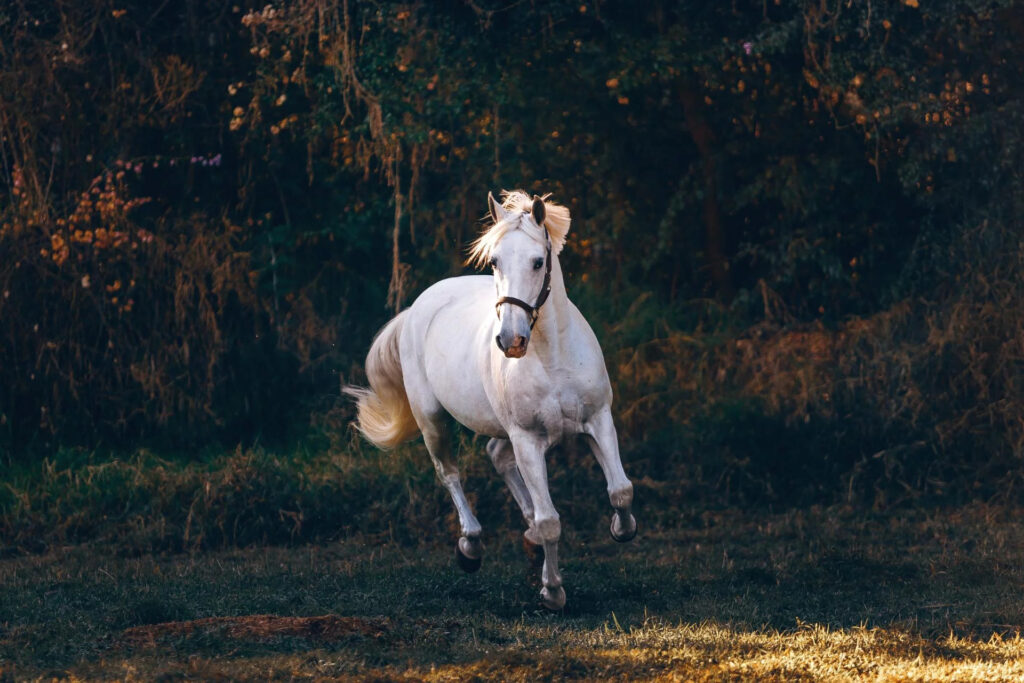Menu

When the rain is pouring down and the wind blows strong, it's hard to resist the temptation of rushing to the field. You just need to check up on how your horse is doing. When you spot your four-legged friend standing there against the wind shielding himself from the rain, it is even harder. Should you perhaps take him inside? Your heart says yes – your head says no.
You may also like to read: Blanket for your horse: When is it time and how do you choose the right one?
Here, you should listen to your head. Of course, once in a while, it can be necessary to give in to the temptation and turn the poor thing in under continuous rain and stormy weather. But most often your horse actually needs that wet and windy time outside. As long as it is not in lack of water or something to chew on – and of course not standing wearing a completely wet-soaked rug when it’s colder than 10 degrees – you will really do your horse a favor by leaving him out there.
The point is: The more time a horse spends inside a stable, unable to move for more than a few square meters, the less resistant his legs – and the rest of his body - will be to injuries. He will have difficulties withstanding the muddy and cloddy surface and the everchanging temperatures once turned out.
Furthermore, when a horse spends too much time in the stable, he will be more excited when finally being turned out. His stiff legs will be more susceptible to sprains and distortions of the joints. Horses with a long turnout time strengthen their bones, tendons, and muscles, and this reduces the risk of injury. Therefore; Ignore the worries when the weather is bad. Let the horse walk around outside as much as possible and know in your mind that you are doing the right thing. In short, time in the field extends the life of your horse.
Time spent in the field is serious training. Well... Your horse won’t suddenly get fit or achieve a stronger back after one day in the field. Not at all. But by turning him several hours a day, he will eventually, he will be continuously activated, strengthened, and stimulated in his mind and body. Just like wild horses living in nature.
When a horse is outside, he walks, stands, and occasionally takes a proper run. He does what every horse is born to do: eat, run, play, roll, stag and buck. Due to the fact that the horse's body is accustomed to these activities, the risks of injuries are minimal. But, when the body of a horse is not activated and left standing for many hours a day, the body is not used to these unrestrained escapades. Then the joints and muscles will easily be overloaded. A long day in the field is an essential and free way to build up a strong, resilient, and healthy horse. Field time is important training.
• It increases the muscle mass
• It improves coordination and body awareness
• It encourages the blood circulation
• It maintains a good condition
• It strengthens the nervous system
• It strengthens connective tissues, ligaments,
and tendons
Thoughtfully, a horse is designed by Mother Nature to be active 16-20 hours a day. Imagine how many of these important hours we take away from him by putting him in a stall all night or more. Therefore, horses need to be able to walk and run around outside for at least eight hours a day.
Without the many hours outside – in both sunny and rainy weather - without grass, mud, or sand under his hooves, the horse wouldn't be able to live the life he was designed to live. The hours in the field simply make the horse become a horse.
However, there are also many other benefits of letting your horse turn out many hours a day. For example, exercise contributes to the horse's blood circulation, which gives the organs more oxygen to function optimally, just like moving around outdoors helps the horse to maintain good coordination and strengthens his awareness of his body parts. Time in the field can benefit any horse regardless of its type, gender, and age - from the pony at the comfort level to the hard-working top horse.
• Letting the horse stay outside at least eight hours a day
• Training the horse as many days as possible
• Make sure that the field is large enough to allow the horse to get away from other horses easily
• Feed him with plenty of hay or other kinds of hay so that his digestion won’t fail
• If possible, turn your horse out after your training to increase his muscle regeneration and avoid any stiffness
You may also like to read: Create a successful environment in the stable during winter
